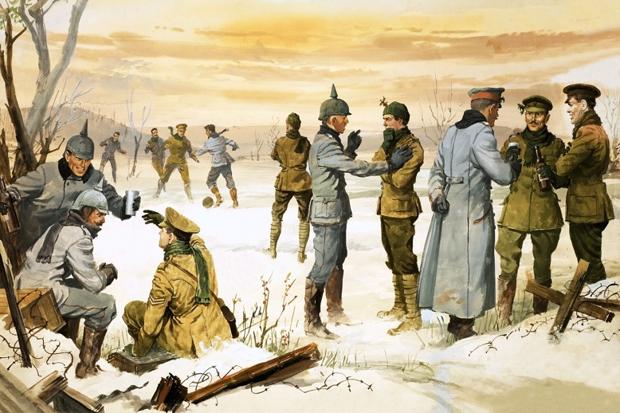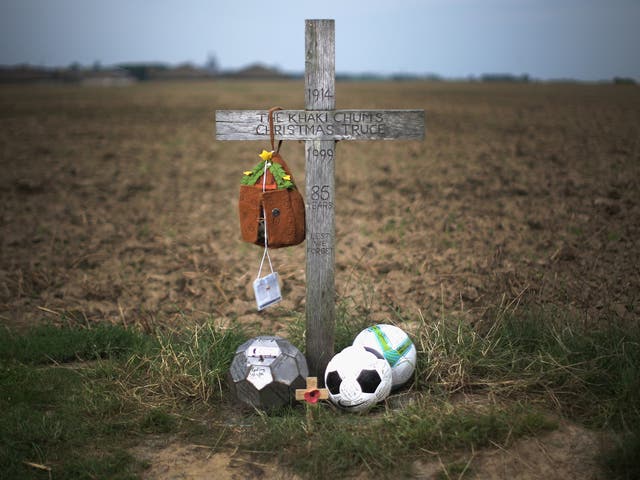World War I was marked by an unprecedented level of violence that shocked the world with its scale and brutality. The conflict resulted in widespread destruction, loss of life, and immense suffering. But on Christmas Eve and Christmas Day of 1914, soldiers from opposing sides along the Western Front, particularly British and German troops, temporarily ceased hostilities to celebrate the holiday season. Despite its informal and localised nature, the Christmas Truce of 1914 has One of the worst wars in human history, World War I, usually referred to as the Great War, broke out in 1914 and lasted until 1918. Major powers and coalitions had a role in the conflict, which had worldwide consequences despite having its main concentration in Europe. The battle originated from a multifaceted network of political, economic, and militaristic forces that had grown over many years. The powder keg of hostilities among European nations was stoked by the assassination of Archduke Franz Ferdinand of Austria-Hungary in Sarajevo on June 28, 1914.
The scope and ferocity of the violence that characterised World War I startled the whole world. The conflict caused enormous suffering, and a great deal of destruction, and was best illustrated by trench warfare on the battlefields of the Western Front. There were numerous fatalities as a result of the extensive utilisation of machine guns, poisonous gases, and artillery bombardments. In addition to the continual risk of enemy fire, soldiers had to put up with unfavourable living circumstances in the trenches, where illness, impoverished conditions, and extreme temperatures increased their suffering.
This is the context in which an incredible story comes out from the harrowing trenches on the Western Front on Christmas Day, 1914. Amidst the horrors of World War I, the Christmas Truce between 24th and 26th December 1914 remains a fascinating and poignant chapter in history when around Christmas, combatants on the Western Front, especially in the trenches of Belgium and France, declared an unofficial ceasefire.
The circumstances of this Christmas Truce are the result of multiple variables coming together. By December, most of the troops in the trenches had grown weary of fighting and yearned for an end to the carnage. They had thought that the war would be finished by Christmas, yet here they were, still muddy, freezing, and engaged in combat, during Christmas week. With December 25 drawing near, the relentless pouring rain gave way to frost and a small covering of snow fell over the Flanders battlefields. In an attempt to boost morale, German Emperor William II sent Tannenbäume, or Christmas trees, to the front, adding to the festive mood. Then, on Christmas Eve itself, a severe frost followed weeks of moderate but dreadfully wet weather, that left the men feeling as though something apocalyptic was happening.
Information gathered from letters, diaries, memoirs, and contemporary newspapers suggests that in certain sections of the trenches, a pause in hostilities commenced on Christmas Eve. German soldiers, likely hailing from the remote areas of their country and predominantly Catholic southern regions, erected Christmas trees adorned with candles in some locations. Upon witnessing this, some English soldiers expressed joy, while others were initially cautious, suspecting a possible trick. Subsequently, the German soldiers initiated the singing of Christmas songs, occasionally accompanied by musical instruments. They extended greetings to their British counterparts in the opposing trenches, in some places pledging not to engage in gunfire on Christmas Day. Initially met with suspicion, British soldiers responded by firing at the Christmas trees. However, when no retaliation ensued, they shifted to singing playful and irreverent songs of their own, eventually transitioning to traditional Christmas carols. A little further on, the two groups serenaded each other with carols; the British chorus sang “The First Noel,” while the German chorus sang “Silent Night”.

German soldiers stand with British soldiers in No Man’s Land on the Western Front, on December 26, 1914. (Imperial War Museums)
A particular episode is recorded in the Scots Guards war diary where Private Murker encountered a German Patrol and was offered a glass of scotch and some cigars; the message that was passed back stated that if they didn’t fire at them, the Germans wouldn’t fire back at them.
Finally, soldiers braved into No Man’s Land as Christmas Day approached, shaking hands, giving gifts and photos, griping with one another about the war, and bouncing a ball around. This spontaneous truce allowed men on both sides to repair their trenches and gather and bury the dead. In some cases, it was initiated by officials, while in others, it was launched by adolescent recruits.
- S. Fenton Of the 2nd Field Company Royal Engineers wrote very simply in his 26th December 1914 diary entry, “Spent a very quiet Xmas day. Troops fraternized with enemy on 6th Div. front and held a concert and football match. Pork for dinner”.
Official War Diary entry for 25 December 1914 of the 11th Brigade, III Corps of the British Army recorded “After a night entirely free from sniping, a kind of informal truce took place all day. The Germans, who were not allowed near our wire, met our men between the lines on most friendly terms, cigars, cigarettes and news being exchanged freely”.

British and German soldiers hold a Christmas truce during the Great War, Angus McBride, (1931-2007) (The Bridgeman Art Library
Reginald Berkeley wrote in The History of the Rifle Brigade in the War of 1914-1918 (1927) “The three Battalions in the line, like the rest of the British Army, met the enemy in No-man’s land; exchanged the ‘souveneer’ so precious to the hearts of the Private Rifleman; smoked German cigars and gave ‘gaspers’ in return; speculated with philosophically minded Teutons upon the futility of the whole thing, and upon the ‘rumness’ of talking together today and killing each other tomorrow; passed Boxing Day in the traditional spirit of sentimentality; and resumed the war hammer and tongs on the 27th”
After a week without any news, the truces were finally made public when The New York Times, a publication based in the impartial United States, broke an unofficial press embargo on December 31. Quickly after, the British papers began publishing a number of first-hand reports from soldiers in the field, drawn from editorials on “one of the greatest surprises of a surprising war” and letters from the soldiers to their families. Images had reached the press by January 8, 1915, and front-page pictures of German and British soldiers chanting and singing between the frontlines appeared in the Mirror and the Sketch.
The Manchester Guardian reported on 31 December 1914 “That there was an unofficial truce along sections, at least, of the trenches in France on Christmas Day, and that advantage was taken of it for some remarkable fraternizing among enemies, is shown in convincing detail in the following extracts from letters just arrived from the front”.
In the days that followed Christmas, hostilities resumed on the Western Front, although the cessation of fighting persisted until after New Year’s Day in certain regions. The success of the truce depended on the approval of junior officers from both sides. However, British and German generals promptly took measures to prevent any further instances of friendly interaction between their troops. A prohibition on non-combat interaction with the adversary was one measure. The appointment of official war photographers and the shift from citizen journalism to officially authorised representations of the visual record was the second step.
Despite this, there were no instances of courts-martial or punishments related to the events of the Christmas Truce, likely because senior commanders recognized the detrimental impact such actions would have on morale in the trenches. Efforts to revive the truce on Christmas Day in 1915 were thwarted, and there were no subsequent widespread cease-fires on the Western Front until the armistice of November 1918.
The Christmas Truce of 1914 left behind a legacy that endures beyond the confines of battle, encapsulating the universal human need for peace and humanity even in the face of hostilities. A potent emblem of the troops’ common humanity on opposite sides. It emphasises that despite the terrible conditions of war, people are still capable of empathy, compassion, and unity. Front-line soldiers took matters into their own hands and briefly disobeyed instructions to hold a moment of peace. People are still motivated by the Christmas Truce because it is a historical occurrence that defies the conventional understanding of war. It has been remembered via a variety of mediums, such as music, literature, and film, serving as a reminder to upcoming generations that humanity may triumph over war.

The ground outside Ploegsteert Wood, where British and German soldiers played football during the 1914 Christmas Day ceasefire in World War One, is marked by a plain wooden memorial cross.
Reference
- The History of the Rifle Brigade in the War of 1914-1918, Richard Berkely, (1927).
- The Christmas truce: myth, memory, and the first world war, Theresa B. Crocker, University Press of Kentucky, (2015).
- Rethinking resistance as an act of improvisation: Lessons from the 1914 Christmas truce, NJ Wiedemann, M. Pina e Cunha, & S. R. Clegg, Organization Studies, (2021).
- Commemorating the Christmas Truce: A Critical Thinking Approach for Popular History, Kathryn N.McDaniel, The History Teacher (2015).
Image Source
- Britannica
- The Atlantic
- The Chaplain Kit
- Art & Theology
- Independent, UK
- December 21, 2023
- 7 Min Read
- December 20, 2023
- 10 Min Read
- December 20, 2023
- 9 Min Read
- December 20, 2023
- 8 Min Read
- December 20, 2023
- 6 Min Read
- December 20, 2023
- 5 Min Read

















